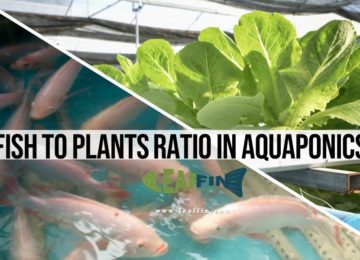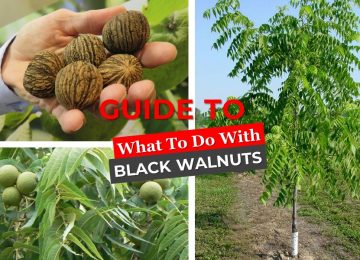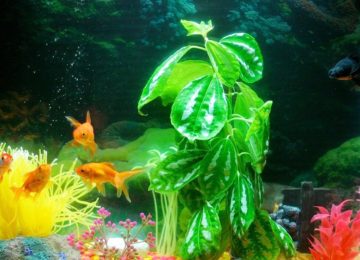Being a curious and adventurous gardener, you may get bored of growing plants in soil that is known as geoponics. So why not experiment with something new and interesting? like growing plants in water?
Growing plants in water with no soil are called hydroculture. The nutrients are dissolved into water to deliver to plants.
Table of Contents
Do Plants really need Soil?
Before answering that questing, let’s figure out why plants need soil? or what does soil provide to plants?
Basically, soil
- provides support to the plants
- Gives water and oxygen
- provide nutrients
So we can say that soil just acts as a medium to provide plants support, water, and nutrient. Soil can be replaced until plants get their support, water, and nutrients. By choosing not to use soil, you are also protecting your plants from common diseases, and pests.
The information provided here is beneficial to gardening enthusiasts who want to try hydroponics as a hobby. The commercial production of food utilizing hydro-culture techniques is complicated. It demands competency in farming and business.
Ways to Grow Plants without Soil
1. Aquaponics
Aquaponics is an innovative method in which plants absorb the fish waste as nutrients and recycle the water for the fish. This system creates a symbiotic relationship in which fish provide nutrients to plants and water is conserved as you don’t need to change the water for fish. Aquaponics is integrated with micro-farming to form Microponics. You can start your aquaponics system with these small betta aquariums with plants on top.
2. Aquascaping
Aquascaping is a method to grow aquatic plants generally for the purpose of decorating the aquarium and arranging them with rocks, stones, or driftwood, in an aesthetically pleasing manner. In this method, you are limited to aquatic plants only that are submerged totally under water. Usually, Aquarium housing different fish are aquascaped with the plants, however, you can also create an aquascape with plants only. Water Garden is also an example of Aquascaping.
3. Hydroponics
Hydroponics is a type of hydroculture to growing terrestrial plants without soil by dissolving nutrients in a water solvent. The inert medium, like perlite or gravel, support the plants with only roots submerged to the nutrients solution. Read more about six types of hydroponics and how they work here. If you wish to start asap, check these awesome hydroponics kits to grow herbs indoors.
4. Aeroponics
Aeroponics is an advanced type of hydroponics, but we have mentioned it exclusively here because it is very different from other types. Unlike aquaponics or hydroponics, aeroponics grows plants in a mist or air environment without any aggregate medium or soil.
Things to Consider while growing Plants soilless
To grow plants in water, you must consider
- The provision of a suitable container
- Supporting ways either by growing media or by the suspension of the plants above the water
- Providing Nutrients
- The ways and design to the provision of a nutrient solution
- proper aeration of the water solution.
Containers
There are many types of containers that you can use including glass jars, cement trough, earthenware crocks, fiberglass tank, and metal containers.
- The container should be leak proof.
- To avoid any corrosion that can be toxic to the plants, you should paint inside of metal/concrete containers with asphalt emulsion. Fiberglass is the most corrosion-resistant than other materials.
- To prevent sunlight from making chemical changes and the growth of algae in the solution, you should paint the Glass containers dark on the outside. Leave a narrow strip unpainted down the side so you can check the solution level.
Supporting The Plants
Plants are supported in two ways.
1. Pure Water-culture
In water culture, you grow plants with roots immersed in nutrient solution without any aggregate medium. The plant is supported by “platform” that holds the stem and upper parts of the plants above the solution. This is sometimes known as the “litter bearer.”
You can make the platform with chicken/hardware wire base with 3 inches of wood shavings, excelsior or litter placed above it. You should mold the metal wire to fit across the container top and cover it with plastic or asphalt-based paint. To allow aeration, platform and supporting material should be porous.
The most recommended platform to stabilize the plants above the solution is Styrofoam. You can insert the plants into holes of the floating styrofoam. Keeping the holes large enough is important to avoid constriction of stems at maturity. You can use cotton or other material around the stems as shims in the holes. You should punch small holes randomly in the styrofoam to allow for better aeration. The trellising is needed to further support the tops of heavy plants.
2. Medium-based (other than soil) or Aggregate Culture
In this type of system, plants are grown in shallow troughs or tanks that act as the container for the medium.
The gravel, sand or other aggregates replace the soil that is used in conventional methods to support and provide anchorage for the plants. This culture also utilizes other soil substitutes such as vermiculite, wood shavings, and sawdust.
Nutrients are supplied as dry fertilizer or in solution form in one of several ways that include:
- Sprinkled dry on the surface and watered into the root zone.
- Flooded from the bottom up;
- Dripped onto surface
- Soaked on the surface;
The gravel will easily flood and drain for the bottom feeding. Sand is good with top feeding and is not usually coarse enough for application from the bottom.
There are many types of growing media you can use like sand, vermiculite, rice hulls, redwood bark, pine bark, peat moss, perlite, and Rockwool. Check the full list of growing media with their pros and cons here. Here is the full guide to choosing a Growing Media.
The type of Nutrients
Hydroponics need a large concentration of nutrients for plants. These minerals have to come from somewhere – usually a mine. In hydroponics, there is no one perfect nutrient solution. All of the essential nutrients and elements needed for plant growth are present in any good solution. The sources and amount of these nutrients vary from one solution to another. Along with the many recommended formulas, there are various ready to use solutions, commercial fertilizer and chemically-pure salts on the market. Most of these mixes yield fair to excellent outcomes when you use them as directed for the hydroponics system. These combinations are easily soluble in water for an adequate nutrient solution.
The organic hydroponics add-ons or entirely substitute the inorganic elements with organic fertilizers. The commonly used organic material includes guano, blood meal, bone waste, fish meal, wood waste, manure and plants residue.
In Aquaponics, Fish supplies the nutrients to the plants. Plants, in return, clean the water for fish. This approach makes hydro culture more sustainable and organic, potentially replacing the need for mining.
The composition of any solution changes with the growth of plants as they utilize the nutrients. Therefore, you should be attentive to supplement the content by adding certain needed ingredients or changing the entire solution over time. You need to perform frequent tests to determine the imbalanced concentration of nutrients and change the solution.
The 2 recommended soluble fertilizer for weekly additive are made with 20-20-20 analysis fertilizer at 25-5-20 at 1 pound per 100 gallons and 1 pound per 100 gallons. You can use the 20-20-20 for the initial 3 weeks and 25-5-20 for rest phase. You need to substitute 1 pound of calcium nitrate (per 50 gallons water) every 2 weeks for tomatoes to reduce blossom-end rot and ensure adequate calcium.
System design and the ways to the provision of the Solution
You can choose from various procedures to deliver the solution to the plants. This depends whether you’re using a media based system or water culture system.
For larger troughs and in media based, the trough is filled with the help of a pump. When the pump turns off, the nutrient solution drains back into the nutrients container, making the growing medium moist. You can use a time clock to turn the pump off and on at selected intervals.
For a small setup, the container is filled with a nutrient solution almost to the level of the litter. Then, you remove the old solution and add the new solution at predetermined intervals. The size and growth rate of the plants determines the frequency and number of solution changes. You can initially start solution changes at weekly intervals, then twice a week when plants grow mature.
Aeration
You need to pump air through the solution with an aerator to supplement the lack of oxygen in the water and prevent the resulting growth impairment. You can use normal aerators for small units that are usually used to keep fish alive in aquariums or bait wells.
You should leave air space of about one inch between the solution and litter. You can allow 2-3 inches of airspace below the litter as the plants grow.
Moreover, you need to adjust the alkalinity and acidity of the water to keep the pH within a range of 6.0–6.5 for adequate plant growth. You need to test it with indicator paper and add sulfuric acid to lower pH or alkaline material such as sodium hydroxide to raise pH.
Have any question? Feel free to ask in the comments. You can share your own experiences that may add value to information and knowledge of others. & if you have any friends who want to know more, please share this article with them. Thanks for reading.



